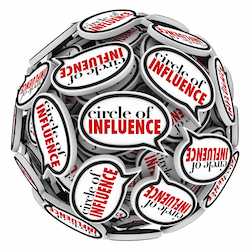Inclusion: Be the Ripple Effect in Your School
A MiddleWeb Blog
 Do you feel it? There’s a growing connectedness between dedicated educators and stakeholders who want to create equitable, meaningful learning experiences in inclusive settings.
Do you feel it? There’s a growing connectedness between dedicated educators and stakeholders who want to create equitable, meaningful learning experiences in inclusive settings.
I’m seeing hopefulness, courage, tenacity, and empowering ideas that lead to valuable action steps happening in so many schools nationwide. Do you notice this in your school?
OK, I hear the rest of you – there’s also plenty of frustration as many advocates who stand for every student’s right to a positive, impactful education strive to create equitable and inclusive experiences. Is this more of what you see in your daily experiences?
Let’s talk about that. I am pretty fired up about possible reasons for this frustration and the negative impact this frustration has on too many students and families.
This negative cycle brings forth one difficult truth. We have laws to protect the rights of students with disabilities, yet the attitudinal barriers that still exist deter these civil rights from reaching their full and powerful potential.
Whether you are in the connected and empowered group or the frustrated group, this post is for you. This post is a call for us to come together in support of more consistent equitable inclusion nationwide.
Ultimately, this post is for our students: your students – each precious, valued thinker who deserves to be fully engaged and enriched by every classroom and school experience.
Transform Frustration into Success
There is no magical silver bullet as educators strive to apply meaningful practices in inclusive settings. There I said it. I should feel better—so why don’t I?
Very generally speaking, it seems many teachers, parents, and administrators look for that magical “just tell me how to do it” linear stance when encountering new ideas. Many look for that quick recipe, that step by step how-to guide that can be applied tomorrow morning.
But come on, folks! It’s going to take much more time, effort, patience, and resilience to get to a place where many more educators, policy makers, and stakeholders embrace what it means to truly implement equitable meaningful inclusive practices.
Commit to being a part of the process—to joining in as we shift attitudes and design instruction that meets the needs of each learner. Be able to say, Yes! My students are confident in their abilities – each student feels valued, supported, and empowered!
Let’s be a part of a powerful ripple effect of positive actions. Look around the nation – positive actions are having powerful effects. Use this process, people! You could be the drop that starts a ripple effect in your own school.
What YOU Can DO
✻ Take initiative: Sustain your own learning—read books, articles, and current policy updates through the Council for Exceptional Children (CEC)—and link your own learning back to your students. How can your learning empower you to meet the unique needs of the students in your class? Use this information to guide your instructional decisions and your advocacy steps.
✻ Ditch any ableist views: View learners through a strengths-based lens. Focus on variability—not disability. Stop unnecessarily (and unintentionally) stigmatizing and limiting students who deserve opportunities to apply their abilities in striving to be their personal best. Value them. Encourage them. Empower them.
✻ Speak UP and OUT!: Do you know a colleague, parent, or administrator who may unintentionally express an attitudinal barrier? Who focuses on the deficits of student(s)? Who inadvertently causes stress and may negatively impact the confidence of student(s)?
Consider the power of your voice. Your voice, after all, is a voice for your students. We must advocate—and model that advocacy process—so our students learn to self-advocate over time. So plan out your pragmatic and powerful stance—and get those behind-the-scenes conversations started. Raise awareness. Be patient…and know that you are an important part of a necessary shift.
✻ Collaborate and Find your Tribe: You are not alone. Seek a colleague or an administrator—extend your professional learning network—find your support system and stay strong.
✻ Embrace Student-Centered Learning: Embrace Universal Design for Learning. UDL is not just a how-to guide. UDL is a mindset and a dedication to the progression of human thought and actions when designing equitable learning. Learn more about project-based learning and student-centered learning thanks to the shared resources at Edutopia.
✻ Roll up YOUR sleeves: Engage with professional learning activities. Then roll up your sleeves and figure out how you may apply the shared ideas. There is no recipe. There is no magic silver bullet. But YOU—your thoughts—your actions—your next steps have the potential to meaningfully empower the process of improving learning experiences and outcomes for students.

It is beyond the time for more educators to be experiencing the hope, courage, tenacity, resilience, and empowerment that inclusive practices may bring. What is your next step as you create that ripple effect we all need? Just think what can happen as the ripples connect across our nation….
Let’s strive for powerful consistency as we pursue equitable and meaningful learning experiences for all.




































